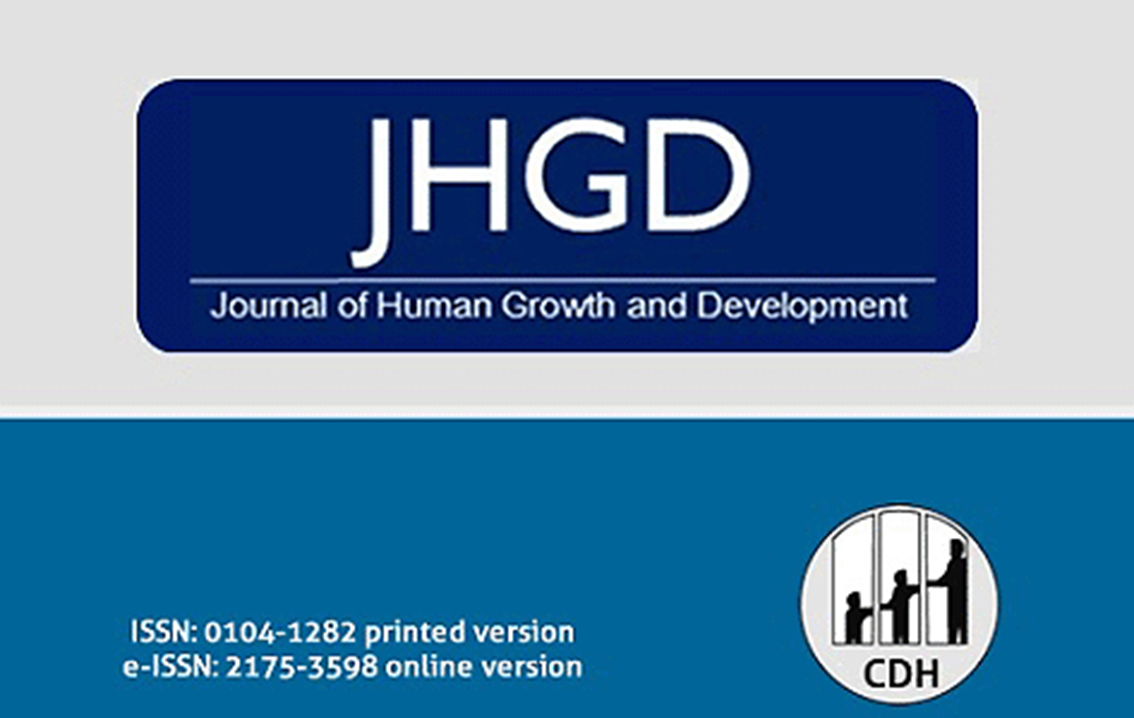Accident and vascular injury with stingray in the Alto Juruá, Acre, Brazil: a case report
DOI:
https://doi.org/10.7322/jhgd.v29.9542Keywords:
Ichthyism, Stingrays, Occupational Health, Venomous AnimalsAbstract
Introduction: Fish accidents, called ichthyism, are common and considered a neglected health problem with high morbidity and low lethality. Noteworthy are the poisonings by freshwater stingrays, which are considered very serious and one of the most important injuries caused by aquatic animals in South America.
Case Presentation: To describe an accident and vascular injury with venomous stingray animals in the Alto do Juruá, Acre, Brazil. Male patient admitted due to stingray in the left lower extremity 20 days ago.
Conclusion: The freshwater stingray, due to its sharp characteristics, injured the great saphenous vein, requiring surgical intervention. The situation presented negative evolution due to the lack of necessary procedures in the first attendance, such as the proper cleaning of the wound and the removal of the sting.
Downloads
References
2. Silva GC da, Sabino J, Alho CJR, Nunes VLB, Haddad Junior V. Injuries and envenoming by aquatic animals in fishermen of Coxim and Corumbá municipalities, state of Mato Grosso do Sul, Brazil: identification of the causative agents, clinical aspects and first aid measures. Rev Soc Bras Med Trop. 2010;43(5):486-90. DOI: http://dx.doi.org/10.1590/S0037-86822010000500002
3. Haddad Junior V, Cardoso JLC, Garrone Neto D. Injuries by marine and freshwater stingrays: history, clinical aspects of the envenomations and current status of a neglected problem in Brazil. J Venom Anim Toxins Incl Trop Dis. 2013;19:16. DOI: http://dx.doi.org/10.1186/1678-9199-19-16
4. Almeida MP, Barthem RB, Viana AS, Almeida PC. Diversidade de raias de água doce (Chondrichthyes: Potamortrygonidae) no Estuário Amazônico. Arq Ciênc Mar. 2008;41(2):82-9. DOI: https://doi.org/10.32360/acmar.v41i2.6067
5. Monteiro WM, Oliveira SS, Sachett JAG, Silva IM, Ferreira LCL, Lacerda MVG. Hallux amputation after a freshwater stingray injury in the Brazilian Amazon. Rev Soc Bras Med Trop. 2016;49(3):389-92. DOI: http://dx.doi.org/10.1590/0037-8682-0333-2015
6. Haddad Junior V, Garrone Neto D, Paula Neto JB, Marques FPL, Barbaro KC. Freshwater stingrays: Study of epidemiologic, clinic and therapeutic aspects based on 84 envenomings in humans and some enzymatic activities of the venom. Toxicon. 2004;43(3):287-94. DOI: http://dx.doi.org/10.1016/j.toxicon.2003.12.006
7. Diaz JH. The evaluation, management, and prevention of stingray injuries in travelers. J Travel Med. 2008;15(2):102-9. DOI: http://dx.doi.org/10.1111/j.1708-8305.2007.00177.x
8. Reckziegel GC, Dourado FS, Garrone Neto D, Haddad Junior V. Injuries caused by aquatic animals in Brazil: An analysis of the data present in the information system for notifiable diseases. Rev Soc Bras Med Trop. 2015;48(4):460-7. DOI: http://dx.doi.org/10.1590/0037-8682-0133-2015
9. Sá-Oliveira JC, Costa EA, Pena FPS. Acidentes por raias em quatro comunidades da área de proteção ambiental da APA do rio Curiaú, Macapá-AP. Biota Amaz. 2011;1(2):74-8. DOI: http://dx.doi.org/10.18561/2179-5746/biotaamazonia.v1n2p74-78
10. Pierini S V., Warrell DA, De Paulo A, Theakston RDG. High incidence of bites and stings by snakes and other animals among rubber tappers and Amazonian Indians of the Jurua valley, acre state, Brazil. Toxicon. 1996;34(2):225-36. DOI: http://dx.doi.org/10.1016/0041-0101(95)00125-5
11. Cardoso Junior M, Marques RPL. Taxonomia das linhagens de Acanthobothrium Van Beneden, 1850 (Eucestoda: Tetraphyllidea) parasitas de Potamotrygonidae (Chondrichthyes: Myliobatiformes). Dissertação (Mestrado) - Universidade de São Paulo. São Paulo: 2010.
12. Pedroso CM, Jared C, Charvet-Almeida P, Almeida MP, Garrone Neto D, Lira MS, et al. Morphological characterization of the venom secretory epidermal cells in the stinger of marine and freshwater stingrays. Toxicon. 2007;50(5):688-97. DOI: http://dx.doi.org/10.1016/j.toxicon.2007.06.004
13. Garrone Neto D, Cordeiro RC, Haddad Junior V. Work-related accidents in traditional fishermen from the Medium Araguaia River region, Tocantins, Brazil. Cad Saúde Pública. 2005;21(3):795-803. DOI: http://dx.doi.org/10.1590/S0102-311X2005000300013
14. Weiss BF, Wolfenden HD. Survivor of a stingray injury to the heart. Med J Aust. 2001;175(1):33-4.
15. Moutran M, Mojallal A, Chekaroua K, Martin E, Braye F. Foot defect with vascular and neural injury due to freshwater stingray sting: Reconstruction with a lesser saphenous vein adipofascial flap. Ann Chir Plast Esthet. 2009;54(2):156-60. DOI: http://dx.doi.org/10.1016/j.anplas.2008.09.004
16. Dehghani H, Sajjadi MM, Rajaian H, Sajedianfard J, Parto P. Study of patient’s injuries by stingrays, lethal activity determination and cardiac effects induced by Himantura gerrardi venom. Toxicon. 2009;54(6):881-6. DOI: http://dx.doi.org/10.1016/j.toxicon.2009.06.023
17. Lameiras JLV, Costa OTF, Santos MC, Duncan WLP. Arraias de água doce (Chondrichthyes – Potamotrygonidae): biologia, veneno e acidentes. Sci Amaz. 2013;2(3):11-27.
18. Seidel AC, Cavalari Júnior P, Rossi RM, Miranda Júnior F. Associação entre aplasia segmentar de veia safena magna e varizes em membros inferiores avaliada pelo ecocolor Doppler. J Vasc Bras. 2015;14(3):211-6. DOI: http://dx.doi.org/10.1590/1677-5449.0315
19. Junghanss T, Bodio M. Medically important venomous animals: biology, prevention, first aid, and clinical management. Clin Infect Dis. 2006;43(10):1309-17. DOI: http://dx.doi.org/10.1086/508279






